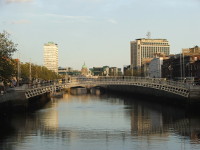
County Dublin
County Dublin it's actually a Dublin City and its suburbs. It is one of the smallest counties in Ireland, but the most populated (27.75% of whole population of Ireland). Everyone will find something here. Dubin, the capital of Ireland offers many attractions such as museums, historic buildings, parks, lively pubs and restaurants. Sandy beaches of Portmanock and Donabate, Howth with its cliffs and lighthouse are great places for a short or longer walks or Dublin Mountains for those who prefer walking at more mountainous terrain. Bird watchers should visit Ireland's Eye, a small island situated north of Howth Harbour, which is the host to a large variety of seabirds, including guillemots, razorbills, fulmars, gulls, gannets (Ireland's fifth colony), cormorants and even a few breeding pairs of puffins. In the south - eastern part of the Dublin Region is located scenic, lively harbor town of Dun Laoghaire (with its characteristic piers), which is a good place for water sports enthusiasts. Going further along the coast you will find a much smaller, but very a charming Bullock Harbour with its residing family of seals. County Dublin is an excellent destination for those who do not have their own transport. All local tourist attractions you will get using public transport: DART (commuter rail), DUBLIN BUS (city buses), LUAS (tram), BUS ÉIREANN (long distance buses). Numerous travel agencies offer day trips to the most interesting places in Ireland.
Interesting places in county Dublin
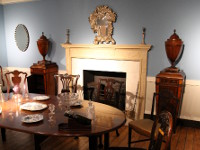
National Museum – Decorative Arts and History
East Ireland | County Dublin
National Museum Of Ireland – Decorative Arts & History is located in a historic military building of Collins Barracks, in the centre of Dublin City. This massive complex was commissioned in 1700 and served as military barracks until the 1990s, being the oldest inhabited barracks in Europe. Since 1997 it became home of National Museum of Ireland – Decorative ... more info and photos
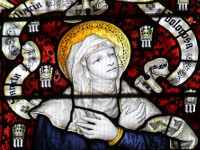
St Patrick's Cathedral
East Ireland | County Dublin
St Patrick's Cathedral in Dublin is largest church in Ireland and is one of the most visited tourist attractions. It was built on the place of sacred well where St Patrick is said to have baptized converts around 450 AD. The wooden church was established here in 10th century and remained until 1192, when John Comyn, first Anglo-Norman Archbishop of Dublin, b... more info and photos

Jeanie Johnston Famine Ship
East Ireland | County Dublin
Jeanie Johnston is a replica of 19th century three-masted tall ship located in the centre of Dublin to commemorate the tragedy of Great Famine. The original Jeanie Johnston was built in 1847, in Quebec, in Canada and was purchased by Irish merchants John Donovan & Sons for carrying goods between Ireland and North America. In the time of Great Famine as many... more info and photos
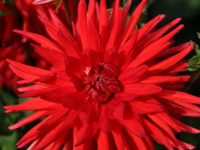
National Botanic Gardens - Glasnevin
East Ireland | County Dublin
National Botanic Gardens in Dublin were founded in 1795 and since then it's very popular place amongst Dubliners and well known tourist attraction. It's also important place of botanical research and conservation, and home of College of Amenity Horticulture. The gardens are beautifully situated on the banks of the River Tolka in Glasnevin. Everyone and at an... more info and photos
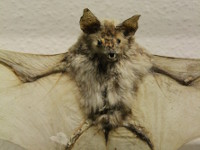
National Museum of Ireland - Natural History
East Ireland | County Dublin
The National Museum of Ireland - Natural History is situated in Dublin's city centre on Merrion Street. The Victorian ‘cabinet-style’ building, designed by architect Frederick Clarendon) was completed in 1857 to house collection of the Royal Dublin Society. In 1877, the ownership of building and collections was transferred to the state and since then is open... more info and photos

Tully Church and High Crosses
East Ireland | County Dublin
Remains of Tully Church are located in Laughanstown near Cabinteely, on southern suburbs of Dublin. The site consists of ruined medieval church and two stone high crosses and is reputed to be dedicated to St. Bridget. The exact date of construction of first church in this place is unknown but the remains of foundation of the early nave may be from 9th centur... more info and photos
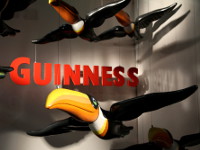
Guinness Storehouse
East Ireland | County Dublin
The Guinness Storehouse at St. James's Gate, without a doubt is one of the biggest tourist attractions in Dublin and is situated just in city center. The brewery established in 1759 by Arthur Guinness became one of the most known and successful beer brands worldwide. The self-guided tour of the seven storey Guinness Storehouse brings closer the history of th... more info and photos
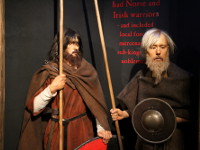
Dublinia
East Ireland | County Dublin
Dublinia is an excellent place to learn and discover history of medieval Dublin. This living history museum is housed in neo-Gothic building of former Synod Hall attached to the oldest cathedral in Dublin - Christ Church Cathedral. There are three exhibitions, each on one floor. Ground floor is dedicated to the founders of Dublin City, the Vikings. Expositio... more info and photos
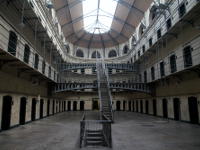
Kilmainham Gaol
East Ireland | County Dublin
Kilmainham Gaol, located in Dublin City is one of the largest unoccupied prisons in Europe and it is strongly associated with the Irish history, especially with Ireland's painful path to independence from the British invader. Gaol designed by John Traile was completed in 1796 and replaced the old Dublin County Jail. At that time the main building comprised o... more info and photos

Poolbeg Lighthouse
East Ireland | County Dublin
Poolbeg Lighthouse is situated at the end of Great South Wall (one of the longest sea-walls in Europe), which enters the Dublin Bay and keeps the inflowing sand away from the port. The lighthouse was established in 1768, and until 1786 operated on candlepower, then was changed to oil, and in 1820 was rebuilt into its present form and painted red. It 's on... more info and photos
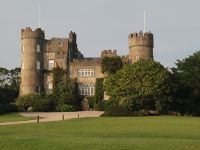
Malahide Castle and Gardens
East Ireland | County Dublin
Malahide Castle and Gardens are located just 15 km north east from Dublin city center and are easily accessible by public transport. The castle and surrounding parklands cover area of over 260 acre and contain one of the most beautiful gardens in Ireland. Whole demesne belonged to Talbot family for nearly 800 years until 1976, when was bought by the State... more info and photos
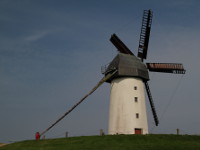
Skerries Mills
East Ireland | County Dublin
The Mill complex in picturesque fishing village of Skerries (35 km north of Dublin), is fine example of Irish industrial heritage. It's quite unique in that it comprises a watermill and two windmills in one location. Milling tradition in Skerries dates back to the 12th century, when harassed by the Vikings raids, monks of Augustinian Order moved here from... more info and photos
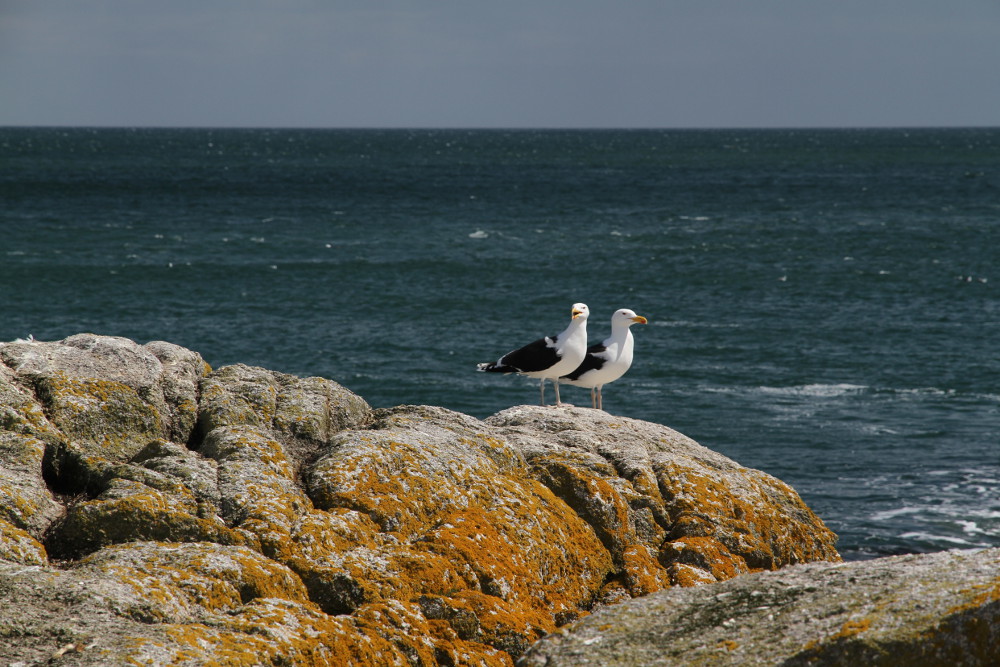
Dalkey Island
East Ireland | County Dublin
Dalkey Island a small, uninhabited, picturesque landmass situated just 300 m of the Coliemore Harbour, near Dalkey Village, southern suburb of Dublin. The oldest building on the island is ruin of St Begnet's church from between 9th and 10th Century, but excavations from 1950's revealed evidence of continuous human activity on the island since neolithic pe... more info and photos
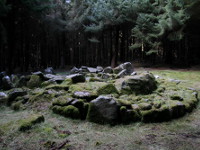
Ballyedmonduff Wedge Tomb
East Ireland | County Dublin
Ballyedmonduff Wedge Tomb is located on the south eastern slope of Two Rock Mountain in County Dublin, just 18 km from Dublin City Center (beside Glencullen Golf Club). This early Bronze Age wedge tomb is also known as "Giants Grave" and was discovered by Alderman Blacker around 1830. Tomb was excavated in 1945, but unfortunately, by this time, the main c... more info and photos

Irelands Eye
East Ireland | County Dublin
The Ireland's Eye is a small, uninhabited island located just a mile off Howth harbour in County Dublin. You will find there ruins of the Church of the Three Sons of Nessan founded in 8th century. There was created The Garland of Howth (also known as the Codex Usserianus Secundus) – manuscript, which contains the text of the four Gospels written in old La... more info and photos
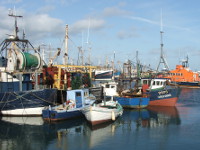
Howth
East Ireland | County Dublin
Howth is the small peninsula located in Dublin Bay with picturesque fishing village and harbour. Because of easy access from Dublin (just 15 km), it's very popular place for one day trips. Howth Market which is open every weekend also attracts many people. You can get there using DART train or Dublin Bus No. 31 from Talbot St. The best way to explore Howth i... more info and photos
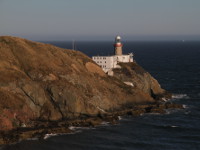
The Baily Lighthouse
East Ireland | County Dublin
The Baily Lighthouse is located on the southeastern part of Howth Head in Dublin Bay, County Dublin. The first lighthouse on this site dates from 1667. It was a cottage and square tower with a coal-fired beacon. The lighthouse we see today was built in 1814 and was equipped with fixed white catoptric light comprising 24 Argand oil lamps and reflectors. The ... more info and photos

National Museum of Ireland – Archeology
East Ireland | County Dublin
National Museum of Ireland – Archeology - contains greatest collections of Irish material heritage and culture. Is home to more than two million archaeological objects and specimens (weaponry, furniture, jewelry, ceramics, glassware, costumes - some artifacts dating from 7000 BC). Museum consists of several permanent exhibitions: “Prehistoric Ireland”, “Ór ... more info and photos
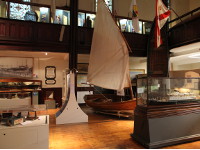
The National Maritime Museum of Ireland
East Ireland | County Dublin
The National Maritime Museum of Ireland, is housed in a former Mariners Church. Dating from 1837, this was built to serve the seafaring community of the bustling harbour of Kingstown, known today as Dún Laoghaire - or even "Dublin's Riviera". The museum first opened its doors in 1974, and has since been managed by the Maritime Institute of Ireland which ... more info and photos



















